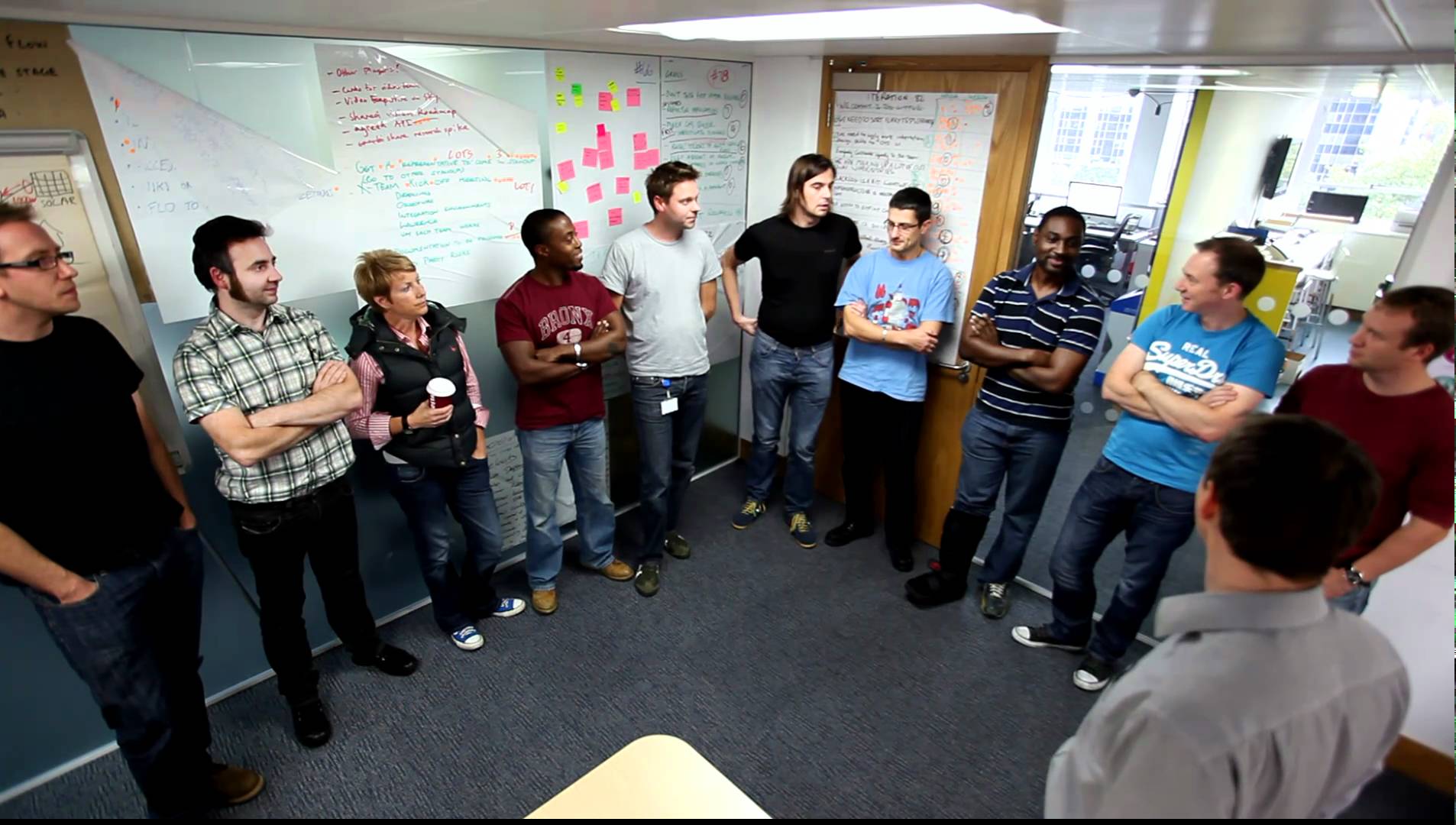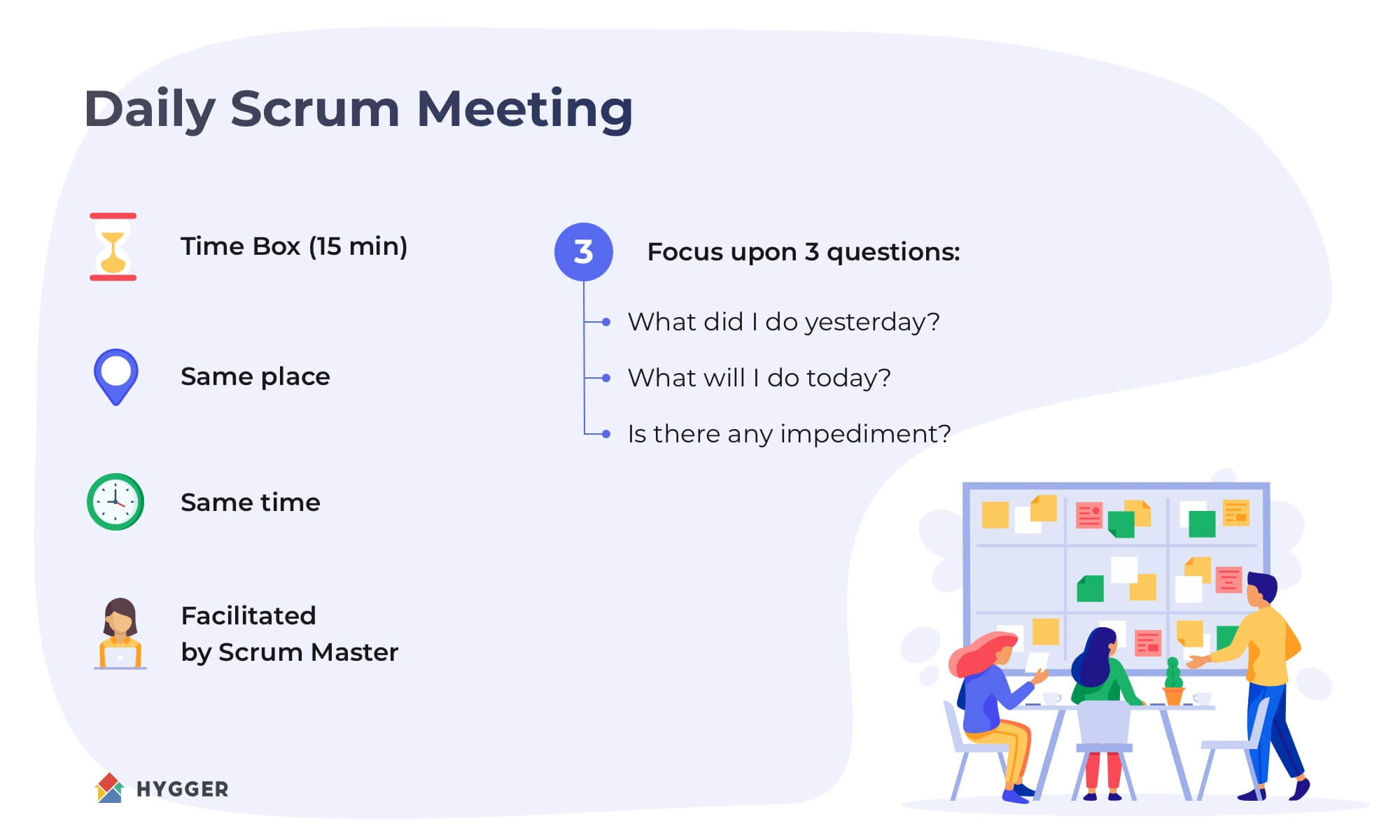Team Stand Up: Leveling Up Your Scrum Daily Stand Up Game
By Team Lean Agile Intelligence

Leveling Up Your Scrum Daily Stand Up Game
The Team Daily Stand Up is another term for the event in the Scrum Guide titled “Daily Scrum.” Both terms are used interchangeably across the industry. It is one of the four official scrum events and is a key “Inspect and Adapt” point which enables an empirical approach inside the scrum framework.
Here, we examine the top approaches to Team Stand Up or the scrum daily stand up, divulging crucial best practices that are useful at every stage of your learning expedition. By following these core techniques, you can gain the aptitude and knowledge essential to implement winning team tactics. Nevertheless, it's essential to note that Team Stand Up constitutes just one piece of the larger picture. To obtain a comprehensive understanding of your team's ongoing process status, we recommend availing yourself of our free agile assessment for Team Agility.
Team Stand Up and The Learning Journey
At Lean Agile Intelligence, we recognize Team Stand Up as the team's ability to inspect progress toward a goal and plan work for the day. We divided the learning journey into 4 different stages: Developing, Emerging, Adapting, and Optimizing. In the following sections, we will discuss each stage in detail as well as provide practical tips and techniques to help you extend your skills in this area.

Source - The Scrum Daily Standup Meeting: Your Questions Answered
Developing
Teams “developing” an understanding of the value of Team Daily Stand-up and adopting the foundational techniques should focus on the following improvements
-
The What: Team Daily Stand-Up takes place every workday
-
The How: One of the fundamental pieces of the event is that it occurs daily. Quoting from the scrum guide “To reduce complexity, it is held at the same time and place every working day of the Sprint.” - Scrum Guide 2020
-
- The What: Occurs same time and place every day
- The How: As mentioned above, the scrum guide specifically states that the daily stand-up should be at the same time and place every day. This helps to reduce complexity as well as remind one another that this is an event that is critical to the success of the sprint.
-
The What: Team members who are actively working on items in the Iteration (i.e., Sprint) participate
-
The How: The daily standup purpose is for the team to inspect progress toward the Sprint Goal and adapt the Sprint Backlog as necessary, adjusting the upcoming planned work. The only required participants are the development team members themselves since it is their meeting.
-
-
The What: A board is leveraged to make work items and impediments visible
-
The How: The Daily Stand-up is an official inspect and adapt event in scrum. Before discussing the progress toward the current plan or making changes to the plan, the team should use a visual board to inspect the current status of all the work and the plan itself. Traditionally scrum teams use the “To Do, In Progress, Done” format for a board but there are no rules for how your board should be organized. In fact, many teams prefer to map out their actual process into divide it into columns on a board. What is important is that all work is visualized and represents the current state.
-

Emerging
Teams “emerging” beyond the foundational techniques of Team Daily Stand-up and are embracing it as they become more proficient, should focus on the following improvements
-
The What: The meeting is not a status meeting; instead, a progress towards the Iteration (i.e., Sprint) Goal is the focus, resulting in an actionable plan for the next day of work
-
Here is an excerpt from that post “The first step to building team accountability is to set common goals. After setting a goal or goals, the team must hold themselves accountable for achieving them. In the book “The Five dysfunctions of a Team,” Patrick Lencioni details the five dysfunctions that teams experience that prevent them from becoming high-performing teams. At the top of the pyramid of dysfunctions is “Inattention to results” which sits on top of “Avoidance of accountability". What this practice suggests is to create team and or product goals and continuously monitor the progress toward those goals as a team. This can be done daily, weekly, by sprint etc. When things are going off track or the results are not as anticipated, the team must correct and adjust without the need for outside intervention. Creating a working agreement that describes how the team will create and assess their own goals is a good first start.”
-
The How: A prerequisite for effective daily stand-ups is a clear and achievable sprint goal. The focus of a daily stand-up should be on the progress towards meeting the goal and create a plan for the next 24 hours to achieve it. The scope for the sprint can be flexible and adjusted at the daily stand-up. The importance of achieving goals as a team shouldn’t be understanding. We have a blog post about coaching accountability and using sprint goals to drive it.
-
- The What: Problems and impediments are raised, and owners are assigned to facilitate the remedy
- The How: Sometimes the reasons for not completing a sprint goal are out of the team’s control or a blocker that is within their own control. Team members should not wait to raise these issues until the daily stand-up but any problems or impediments should be visualized and then discusses as needed. Make sure to assign owners to facilitate the remedy to any problems or impediments that are raised during the daily stand-up. This could be the team member facing the issue, or another team member who is best suited to help resolve it. Make sure that the owner is accountable for taking necessary actions to resolve the problem and follow up on progress in subsequent daily stand-ups.
-
The What: Length is always equal to or less than 15 minutes
-
The How: With practice, teams can usually complete a daily standup consistently in under 15 minutes. It’s the scrum master’s responsibility to coach the team on how to actually keep it within a 15-minute timebox. For some awesome tips on daily stand-up facilitation techniques check out this post by Robert Galen.
-
-
The What: Follow-ups occur on items that do not impact all attendees
-
The How: To avoid conversations that move the daily stand-up away from its intended purpose, we suggest creating a “parking lot” as a reminder for team members to have follow-up conversations as needed after the daily stand-up is completed. Because of this, it is a good practice to block a full half-hour to ensure there is time for a "Stay After" for further technical or impediment discussions. For more information on the Parking Lot technique, see this post by Lisa from Seeincolors.com.
-
* * * * * *
"It’s the scrum master’s responsibility to coach the team on how to actually keep it within a 15 minutes timebox."
* * * * * *
Adapting
Teams “adapting” the Team Daily Stand-up practice to extract the full benefit, should focus on the following improvements
-
The What: Decisions are made at Daily Stand-Up so team members can proceed with their work
-
The How: The team should be empowered to make changes to their plan without the need for permission from others outside the team. The team includes a product owner who can help with prioritization discussion and decision-making. As mentioned earlier, the daily stand-up is not a status meeting but an event where decisions for the next 24 hours are made.
-
The What: The Team Facilitator (i.e., Scrum Master) is not needed to conduct the meeting
-
The How: Early in a team’s lifecycle, the Scrum Master is a critical piece to help drive and coach effective facilitation. Since the scrum master coaches the team on facilitation techniques to keep the Daily Stand-up within a 15-minute time box, eventually they will not be needed to have an effective meeting. If effective, their skills and abilities will be highly wanted but not required anymore for this scrum event. While not required, It is a good practice that the scrum master attends even if the team is high performing.
-

Source - Scrum Stand Up
Optimizing
Teams “optimizing” the knowledge sharing of the Team Daily Stand-up practice learnings across the enterprise should focus on the following improvements
-
The What: The Team Daily Stand-Up eliminates the need for other ad-hoc meetings
-
The How: The output of an effective daily stand-up is a team plan for the next 24 hours describing how the team will achieve the sprint goal. This requires communication and collaboration among team members and aligns everyone for the upcoming future. Between the daily stand-up and a potential parking lot discussion, other meetings throughout the day should be minimized and eliminated if possible so the team can focus on work. Many Ad-Hoc meetings can be conducted during most scrum events. Ryan Ripley has a great video about this topic.
* * * * * *
"Evidence that a team is in a state of “flow” is when they practice real-time communication and do not wait to discuss things the next day."
* * * * * *
Conclusion
In conclusion, the Team Stand up is a crucial part of the Scrum framework, providing teams with an opportunity to inspect their progress toward their Sprint Goal and adapt their Sprint Backlog as necessary. By following the guidelines outlined in the Scrum Guide and focusing on the key aspects of the Team Stand up, teams can use this event to stay aligned and work more efficiently. Whether a team is just starting to adopt the practice or has been using it for some time, there is always room for improvement, and the tips outlined in this post can help teams get the most out of their Team Stand up. Our free agile assessment for Team Agility provides a complete overview of your team's process status, so if you're interested, give it a try.